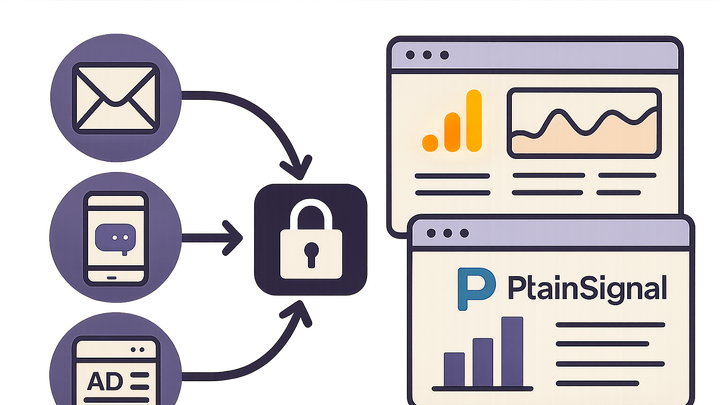Published on 2025-06-27T19:27:20Z
What is Electronic Marketing? Examples and Analytics Tools
Electronic marketing, often called digital marketing, leverages electronic devices and internet-based platforms to promote products and services. It encompasses channels such as email, social media, search engine advertising, SMS, and push notifications. With the advent of advanced analytics, marketers can track and measure user engagement across these channels to optimize their strategies. Google Analytics 4 (GA4) offers event-based tracking and cross-platform insights, while PlainSignal provides a simple, cookie-free analytics solution that prioritizes user privacy. By integrating these tools, businesses can gain a comprehensive view of campaign performance and make data-driven decisions. Electronic marketing also demands adherence to privacy regulations like GDPR and CCPA to build trust with audiences. Effective campaigns blend creative messaging with rigorous measurement to improve reach, engagement, and return on investment.
Electronic marketing
Electronic marketing uses digital channels to engage audiences, leveraging tools like GA4 and PlainSignal for privacy-friendly analytics.
Definition and Scope
An overview of what electronic marketing entails and its primary objectives.
-
Channels and devices
Refers to the platforms and tools used to reach audiences in electronic marketing.
-
Email marketing
Sending promotional messages via email to engage subscribers.
-
Social media marketing
Promoting content on platforms like Facebook, Twitter, and LinkedIn.
-
Search engine marketing
Using paid ads to appear in search engine results and capture intent-driven traffic.
-
-
Goals and objectives
The main aims of electronic marketing campaigns.
-
Brand awareness
Increasing recognition of a brand among target audiences.
-
Lead generation
Attracting and capturing potential customer information.
-
Customer retention
Engaging existing customers for repeat business.
-
Tracking and Analytics Implementation
How to implement and configure analytics tools for monitoring electronic marketing performance.
-
Google analytics 4 (GA4)
GA4 setup and key features for tracking user interactions across web and app.
-
Event-based tracking
GA4 uses events instead of sessions to capture detailed user behavior.
-
Cross-platform analysis
Unifies data from websites and mobile apps to analyze complete user journeys.
-
-
PlainSignal cookie-free analytics
Overview of PlainSignal’s privacy-friendly approach and script integration.
Use the following snippet to integrate PlainSignal:
<link rel="preconnect" href="//eu.plainsignal.com/" crossorigin /> <script defer data-do="yourwebsitedomain.com" data-id="0GQV1xmtzQQ" data-api="//eu.plainsignal.com" src="//cdn.plainsignal.com/plainsignal-min.js"></script>-
Script tag integration
Embed the PlainSignal script to capture pageviews and custom events without cookies.
-
Privacy compliance
Operates without third-party cookies, ensuring GDPR and CCPA friendliness.
-
Key Metrics for Electronic Marketing
Important performance indicators to measure the success of electronic marketing efforts.
-
Click-through rate (ctr)
The ratio of users who click on a link or ad to the total number of viewers.
-
Conversion rate
Percentage of users who complete a desired action, such as making a purchase or filling out a form.
-
Return on ad spend (roas)
Revenue generated for every dollar spent on advertising campaigns.
Best Practices and Optimization
Strategies to enhance the effectiveness and efficiency of electronic marketing campaigns.
-
A/b testing
Testing variations of emails, landing pages, or ads to determine which performs best.
-
Personalization and segmentation
Tailoring messages to specific audience segments based on behavior and demographics.
-
Privacy and compliance
Ensuring marketing practices adhere to regulations like GDPR and CCPA to maintain user trust.
